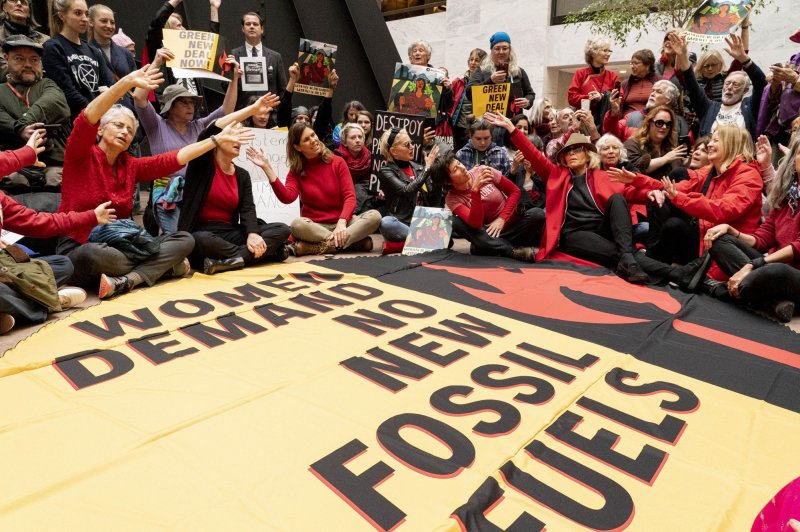1 of 5 | Actor Jane Fonda and others participate in the "Fire Drill Friday" Climate Change Protest in the Hart Senate Office Building in Washington, D.C. on Nov. 1, 2019. A new study said that carbon emissions in the Earth's atmosphere reached a new high in May. File Photo by Ken Cedeno/UPI |
License Photo
June 7 (UPI) -- A new study released Monday showed that carbon dioxide levels in Earth's atmosphere hit all-time highs in May after tumbling to sharp lows during the first months of the coronavirus pandemic.
The Scripps Institution of Oceanography and the National Oceanic and Atmospheric Administration said data revealed emissions reached 419 parts per million in May, its highest recorded level in the 63 years concentration levels have been tracked.
Levels were at 417 parts per million, or PPMs, in May 2020 when coronavirus travel restrictions were in place in many parts of the northern hemisphere.
"We are adding roughly 40 billion metric tons of CO2 pollution to the atmosphere per year," Pieter Tans, a senior scientist with NOAA's Global Monitoring Laboratory, said in a statement. "That is a mountain of carbon that we dig up out of the Earth, burn and release into the atmosphere as CO2 -- year after year."
Tan warned that the reduction of CO2 must become the world's highest priority if the planet is the avoid "catastrophic climate change." He said CO2 is the most abundant human-caused greenhouse gas and stays in the atmosphere and oceans for thousands of years.
"The ultimate control knob on atmospheric CO2 is fossil-fuel emissions," Ralph Keeling, a geochemist who runs the Scripps program at Mauna Loa, Hawaii, said in a statement. "But we still have a long way to go to halt the rise, as each year more CO2 piles up in the atmosphere. We ultimately need cuts that are much larger and sustained longer than the COVID-related shutdowns of 2020."















